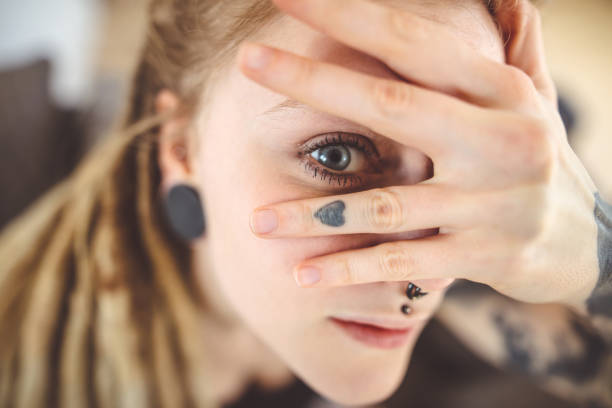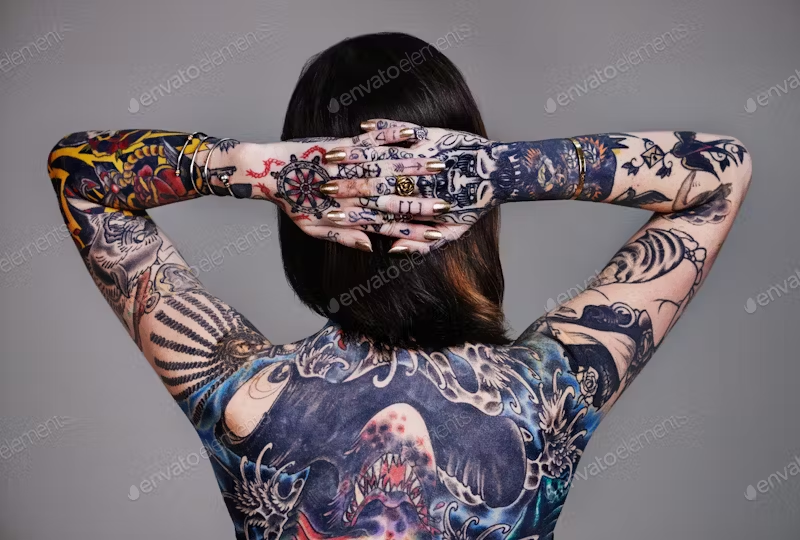Contents
1. Understanding why eye tattoos hurt
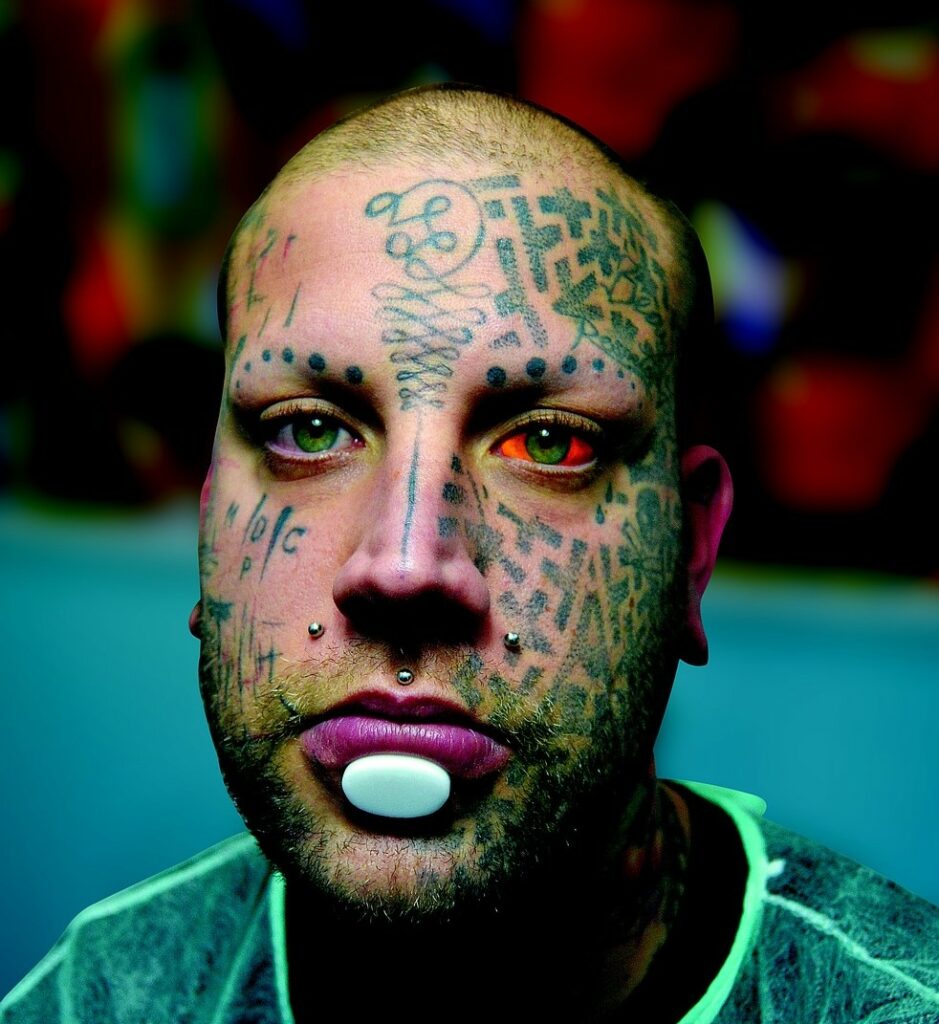
Eye tattoos hurt, there’s no denying it. But have you ever wondered why? Let’s embark on a journey to unravel this mystery, exploring the intricate connection between our eyes, pain, and the tattooing process.
In the world of body art, eye tattoos stand out as bold statements of individuality and creativity. However, behind their striking appearance lies a question that many ponder: Why do eye tattoos hurt? Let’s embark on a journey to unravel this mystery, exploring the intricate connection between our eyes, pain, and the tattooing process.
Our eyes are incredibly delicate yet resilient organs. The white part of the eye, known as the sclera, lacks the protective layers found in our skin. This means that when a needle penetrates the sclera during a tattoo, it can trigger a heightened sensation of pain. Unlike tattooing on the skin, where there’s some cushioning, direct contact with the sensitive tissue of the eye can make the experience more uncomfortable.
To understand why eye tattoos hurt, it’s crucial to delve into the anatomy of the eye. Picture the eye as a complex structure with layers of tissue and nerves. When a needle touches the sclera, it activates these nerves, sending signals to the brain that register as pain. It’s like hitting the body’s alarm system, warning us that something is happening in a sensitive area.
But pain isn’t just about what happens physically—it’s also influenced by our perception. Think about it: Just the thought of getting a tattoo near your eye might make you feel uneasy. Our brains can amplify feelings of pain when we’re anxious or scared, even before the needle touches our skin.
Despite the discomfort, many people are drawn to eye tattoos for their unique aesthetic and the opportunity to express themselves. Eye tattoos are intricate masterpieces, reflecting the individual’s personality and unique style. However, it’s essential to recognize that eye tattoos come with risks.
Poor technique or hygiene practices may result in infections or other complications with eye tattoos. That’s why it’s crucial to choose a skilled and experienced tattoo artist who prioritizes safety. Moreover, effectively managing pain throughout the eye tattooing process is crucial for ensuring a positive experience with eye tattoos.
In this exploration, we’ll delve into the process of eye tattooing, strategies for managing pain, potential risks, and post-tattoo care. By understanding why eye tattoos hurt and how to navigate the experience safely, we can appreciate the artistry and creativity behind this unique form of self-expression. So, let’s embark on this journey together, uncovering the secrets of eye tattoos and the pain they entail.
2. Anatomy of the eye and pain in Eye Tattoos
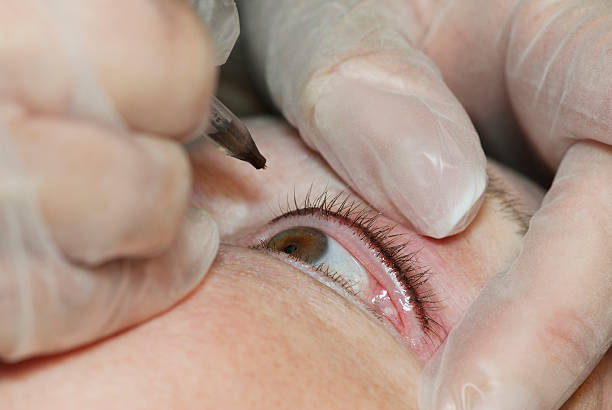
The eye is an incredible organ, capable of capturing light and transforming it into the images that shape our world. To understand why eye tattoos hurt, we must first explore the anatomy of this intricate structure.
At the surface of the eye lies the sclera, commonly referred to as the “white of the eye.” This tough, fibrous tissue provides the eye with its shape and protection. However, beneath this outer layer lies a network of nerves, sensitive to even the slightest touch.
When a needle penetrates the sclera during an eye tattoo, it comes into direct contact with these nerve endings. While tattooing on skin offers some cushioning from its layers of tissue, the sensitivity of eye tattoos means that every needle movement is sharply felt.
The sclera itself is relatively thin compared to other parts of the body, which contributes to the intensity of the sensation. Additionally, the proximity of the eye to the brain means that signals of pain are swiftly transmitted, heightening the overall discomfort experienced during the tattooing process.
Furthermore, the intricate nature of the eye’s anatomy means that precision is paramount during tattooing. Even the slightest deviation from the intended path of the needle can lead to unintended consequences, including damage to delicate structures within the eye.
The anatomy of the eye plays a significant role in why eye tattoos hurt. From the sensitivity of the sclera to the intricacies of its structure, every aspect contributes to the unique experience of getting a tattoo on this most precious of organs.
3. Pain Perception During Eye Tattoos
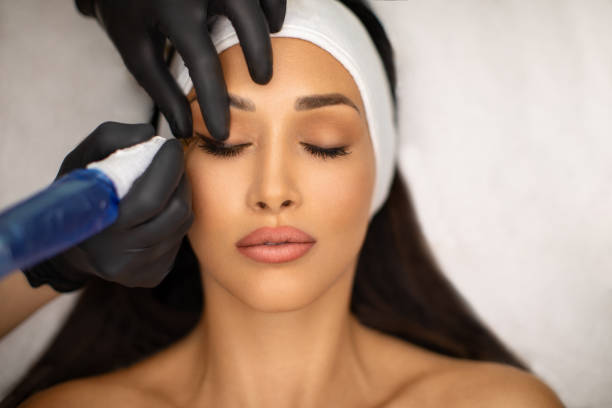
Pain perception during eye tattoos is a fascinating aspect of the experience, influenced by a combination of physical sensations and psychological factors. Let’s delve into how our brains interpret and process pain during this unique form of body modification.
When a needle penetrates the delicate tissue of the eye’s sclera during a tattoo, it triggers a series of nerve signals that are transmitted to the brain. These signals are interpreted as pain, but the way we perceive and experience this pain can vary greatly from person to person.
One factor that influences pain perception during eye tattoos is the individual’s tolerance for discomfort. Some people have a higher pain threshold than others, meaning they can endure more discomfort before reaching their limit. Additionally, factors such as age, gender, and overall health can also play a role in how intensely pain is felt.
Psychological factors also play a significant role in pain perception. The anticipation of pain can often magnify the sensation, causing it to feel more intense than it might objectively be. Fear, anxiety, and stress can all heighten the perception of pain, making the tattooing process more challenging for some individuals.
Conversely, distractions and relaxation techniques can help mitigate pain perception during eye tattoos. Some tattoo artists may encourage their clients to focus on deep breathing or listen to calming music to help alleviate discomfort. Engaging in conversation or visualizing pleasant imagery can also serve as effective distractions, redirecting the brain’s attention away from the sensation of pain.
Ultimately, pain perception during eye tattoos is a complex interplay between physical sensations and psychological factors. By understanding how our brains interpret and respond to pain, we can better prepare ourselves for the tattooing process and develop strategies to manage discomfort effectively.
4. Eye tattoos process and managing pain in eye tattoos

Making eye tattoos involves a careful and detailed process, requiring close attention to detail and strict safety measures. Let’s explore how eye tattoos are done and discuss strategies for managing pain during this unique form of body modification.
The first step in the eye tattoo process is consultation with a qualified and experienced tattoo artist who specializes in this type of work. During this consultation, the artist will assess the client’s suitability for the procedure and discuss their desired design and placement.
Once the design for the eye tattoos is finalized, the tattooing process begins. The client will be positioned comfortably, and the eye area will be thoroughly cleaned and prepped to minimize the risk of infection. Topical anesthesia may be applied to numb the area and reduce discomfort, although its effectiveness can vary from person to person.
Using a specialized tattooing device and ink formulated specifically for eye tattoos, the artist will carefully inject pigment into the sclera—the white part of the eye. This process requires precision and expertise to ensure that the ink is deposited evenly and safely.
During the eye tattooing process, maintaining open communication with the artist is crucial. Clients should freely express any discomfort or pain they may feel, ensuring a smooth and comfortable experience for their eye tattoos. The artist may adjust their technique or take breaks as needed to help manage pain and ensure the client’s comfort.
In addition to communication with the artist, several strategies can help manage pain during eye tattoos. Deep breathing exercises, relaxation techniques, and visualization can all help distract from the sensation of pain and promote a sense of calm during the procedure. Some clients may also find it helpful to listen to music or audiobooks to further distract themselves.
After the tattooing process is complete, the client will be provided with aftercare instructions to promote healing and minimize the risk of complications. This may include using eye drops or ointments to keep the eye lubricated and protect it from infection.
The process of getting an eye tattoo requires careful planning, skillful execution, and effective pain management techniques. By working closely with a qualified tattoo artist and employing strategies to minimize discomfort, clients can achieve their desired look while prioritizing their safety and well-being.
5. Potential Risks in eye tattoos
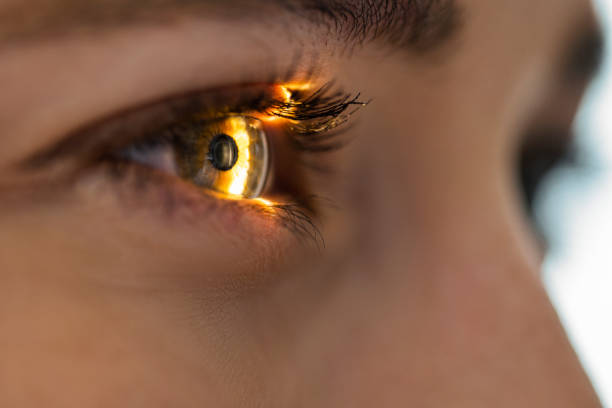
Eye tattoos, while visually striking, come with a range of potential risks and complications that individuals should be aware of before undergoing the procedure. Here are a few risks you should know about eye tattoos:
1. Infection: Any procedure involving the eye carries a risk of infection. The introduction of foreign substances, such as tattoo ink, into the delicate tissues of the eye, can create an environment conducive to bacterial growth. Without proper sterilization techniques and post-tattoo care, infections can occur, leading to pain, inflammation, and potential vision impairment.
2. Eye tattoos may pose a risk of corneal damage: as the cornea, which is the clear front layer of the eye covering the iris and pupil, can be affected during the procedure, there is a risk of inadvertently damaging the cornea, either through direct trauma from the needle or through the introduction of ink particles into the corneal tissue. Corneal damage can result in blurred vision, sensitivity to light, and other vision disturbances.
3. Scleral Discoloration: While the goal of an eye tattoo is to add color or design to the sclera, improper technique or ink placement can result in uneven or unintended pigmentation. Scleral discoloration can be difficult to correct and may require additional surgical procedures to remove or conceal the tattoo.
4. Vision Impairment: In severe cases, eye tattoos can lead to permanent vision impairment or blindness. Damage to the delicate structures of the eye, such as the retina or optic nerve, can occur if the tattoo needle penetrates too deeply or if complications such as infection or inflammation are left untreated.
5. Allergic Reactions: Some individuals may experience allergic reactions to the tattoo ink used during the procedure. Eye tattoos can rarely lead to severe allergic reactions, causing symptoms such as redness, swelling, itching, and discomfort. It’s essential to be aware of these risks and take necessary precautions during the tattooing process. In severe cases, these responses can escalate to anaphylaxis, a severe and potentially life-threatening condition, particularly concerning eye tattoos.
6. Regulatory Concerns: Eye tattooing is not regulated in the same way as traditional tattooing, which may increase the risk of receiving a tattoo from an unqualified or inexperienced practitioner. Without proper training and adherence to safety protocols, the risk of complications is significantly higher.
7. Long-Term Effects: The long-term effects of eye tattoos are not yet fully understood, as the practice is relatively new, and research on its safety and efficacy is limited. Individuals considering eye tattoos should weigh the potential risks against the desired aesthetic outcome and consult with qualified professionals before proceeding.
While eye tattoos can be visually striking and unique, they also carry significant risks and potential complications. Individuals considering this procedure should thoroughly research the potential risks, seek out qualified practitioners, and prioritize their eye health and safety above all else.
6. Pain Management Techniques for Eye Tattoos

Managing pain during eye tattoos is essential for ensuring a comfortable and safe experience. While it’s natural to feel nervous about the procedure, several effective pain management techniques can help minimize discomfort. Here are some strategies to consider:
1. Topical Anesthesia: Before beginning the tattooing process, your tattoo artist may apply a topical anesthetic to numb the area around the eye. Using these methods can greatly reduce any pain or discomfort you may feel during the eye tattoo process, making the experience more comfortable and enjoyable. Lidocaine-based creams or gels are commonly used for this purpose.
2. Cold Compresses: Applying a cold compress to the eye area before and during the tattooing process can help numb the skin and reduce pain sensation. A clean, damp cloth or ice pack wrapped in a towel can provide soothing relief.
3. Distraction Techniques: Engaging in activities that divert your attention away from the tattooing process can help reduce perceived pain. Listening to music, audiobooks, or podcasts through headphones can provide a welcome distraction and help you relax during the procedure.
4. Mindful Breathing: Engaging in mindful breathing techniques can offer a sense of tranquility and ease any apprehensions you may have during the procedure of getting eye tattoos. Consciously inhale deeply through your nose, allowing the breath to fill your lungs, and exhale slowly through your mouth, releasing any tension or unease with each breath.
5. Communication: Open communication with your tattoo artist is crucial for managing pain during eye tattoos. Don’t hesitate to let them know if you’re experiencing discomfort or if you need a break during the procedure. Your artist can adjust their technique or provide additional pain relief as needed.
6. Relaxation Techniques: Incorporating relaxation techniques such as visualization or progressive muscle relaxation can help ease tension and promote a sense of calm during the tattooing process. Visualize yourself in a peaceful, serene environment, and focus on releasing tension from each muscle group in your body.
7. Pain Relievers: In some cases, your doctor may recommend over-the-counter pain relievers such as ibuprofen or acetaminophen to help manage pain and inflammation after the procedure. However, it’s essential to follow your doctor’s instructions and avoid taking any medications that may thin your blood, as this can increase the risk of bleeding and bruising.
Remember, everyone’s pain tolerance and experience with eye tattoos are different. What works for one person may not work for another, so it’s essential to find the pain management techniques that work best for you. Prioritize your comfort and safety throughout the tattooing process, and don’t hesitate to speak up if you’re experiencing significant pain or discomfort. During the meticulous process of eye tattoos, your dedicated tattoo artist is focused on your comfort and contentment, ensuring a personalized and unforgettable experience for you.
7 Aftercare and Recovery Following Painful Eye Tattoos
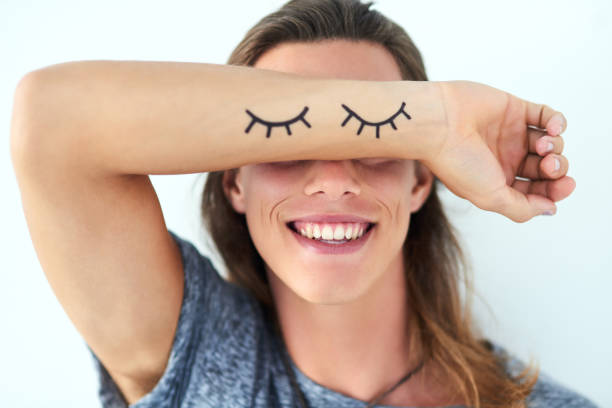
Aftercare following eye tattoos is crucial for promoting healing and minimizing the risk of complications. While the procedure itself may be uncomfortable, proper care afterward can help alleviate pain and ensure a smooth recovery. Unlock the gateway to captivating eye tattoos with these indispensable steps to follow:
1. Follow Your Tattoo Artist’s Advice: Your tattoo artist will give you personalized aftercare guidelines designed for the delicate nature of eye tattoos. It’s essential to follow these instructions carefully to promote healing and prevent infection. This may include advice on cleaning the tattooed area, applying ointment, and avoiding certain activities that could irritate the eye.
2. Keep the Area Clean: Proper hygiene is essential for preventing infection and promoting healing. Wash your hands thoroughly before touching the tattooed area, and gently clean the area with mild, fragrance-free soap and water. Avoid rubbing or scrubbing the tattoo, as this can irritate the skin and delay healing.
3. Apply Ointment: Your tattoo artist may recommend applying a thin layer of antibiotic ointment or petroleum jelly to the tattooed area to keep it moisturized and protected. Be sure to use only the products recommended by your artist, as some ointments may contain ingredients that could irritate the eyes.
4. Protect Your Eyes: During the initial healing period, it’s essential to protect your eyes from irritation and injury. Avoid rubbing or touching the tattooed area, and avoid exposure to sunlight, dust, and other potential irritants. If necessary, wear protective eyewear to shield your eyes from harm.
5. Avoid Swimming and Hot Tubs: While your eye tattoo is healing, it’s important to avoid activities that could expose it to bacteria or contaminants, such as swimming pools, hot tubs, and saunas. These environments can increase the risk of infection and delay healing.
6. Monitor for Signs of Infection: Keep an eye out for any signs of infection, such as increased redness, swelling, pain, or discharge from the eye. If you experience any of these symptoms, contact your tattoo artist or healthcare provider immediately for further guidance.
7. Follow Up with Your Tattoo Artist: Schedule a follow-up appointment with your tattoo artist to monitor your healing progress and address any concerns or questions you may have. Your artist can provide additional guidance on caring for your eye tattoo and ensure that it heals properly.
Proper aftercare is essential for promoting healing and minimizing the risk of complications following an eye tattoo. By following your tattoo artist’s instructions and taking steps to protect your eyes during the healing process, you can help ensure a smooth and successful recovery. If you have any concerns or questions about your eye tattoo or its aftercare, don’t hesitate to reach out to your tattoo artist or healthcare provider for guidance.
Summary
Eye tattoos are visually striking but come with potential risks and pain. Understanding the anatomy of the eye and pain perception helps manage discomfort during the tattooing process. Taking good care of your eye tattoos after getting them is important to help them heal properly and avoid problems. Certainly, while eye tattoos serve as a distinct form of self-expression, ensuring safety and well-being remains paramount throughout the process.

